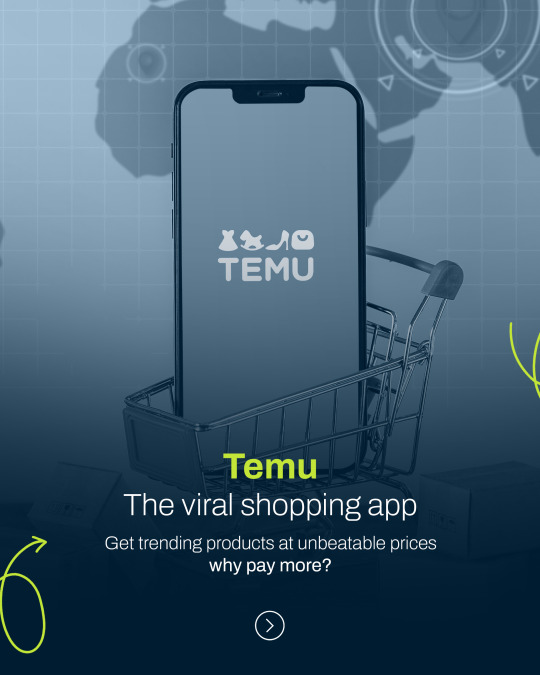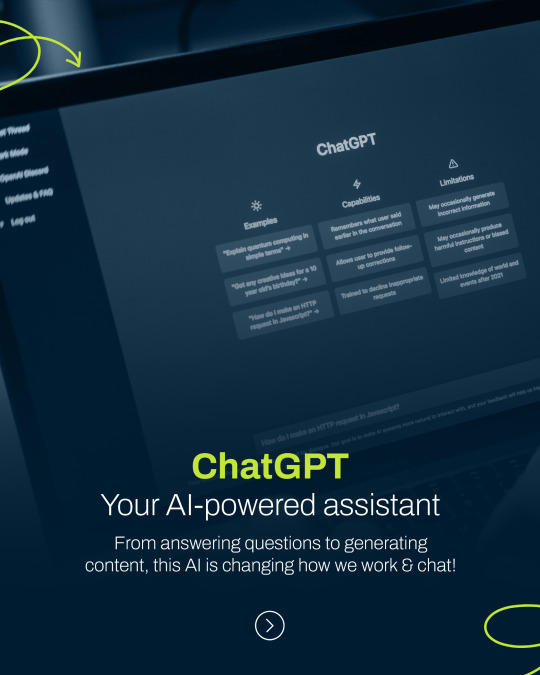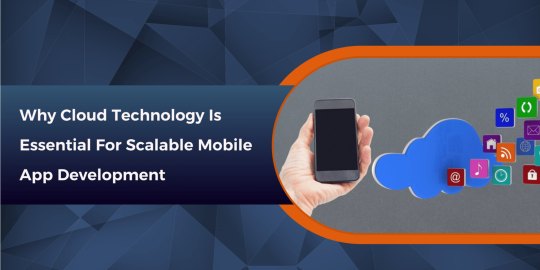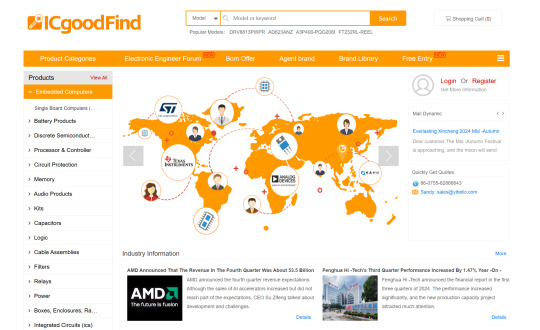#Architectural Mobile Application Development
Explore tagged Tumblr posts
Text
Explore how artificial intelligence ai based mobile apps is transforming the architecture industry and help to develop business sales and customer service.
#Artificial Intelligence#AI#AI powered Mobile Apps#AI based Mobile Apps#Architecture Industry#Architectural Mobile Application Development#Architectural Mobile App Development#Architectural Mobile App#Mobile App Development#AI based Mobile Applications
1 note
·
View note
Text







🚀 Must-Have Apps of 2025! 📱✨ From AI chat to next-level video editing, these apps are changing the game! Which one is your favorite? 🤔👇
#BestApps2025 #TrendingApps #ChatGPT #CapCut #Instagram #Temu #Snapchat
#gaming apps#mobile app development#real money game development services#desktop application development services#back end web architecture#ludo gaming app#mobile apps
0 notes
Text
Mastering .NET for Modern Application Development
Introduction to .NET Framework
.NET, developed by Microsoft, is a robust and versatile framework designed for building modern, scalable, and high-performance applications. From desktop solutions to web-based platforms, .NET has solidified its position as a developer’s go-to choice for application development in the tech-driven era.

Why Choose .NET for Application Development?
.NET offers a plethora of features that make it ideal for creating modern applications:
Cross-Platform Compatibility: With .NET Core, developers can build applications that run seamlessly across Windows, macOS, and Linux.
Language Flexibility: It supports multiple programmtuing languages, including C#, F#, and VB.NET, giving developers the freedom to choose.
Scalability and Performance: Optimized for high-speed execution, Custom .NET Solutions ensures your applications are fast and scalable.
Comprehensive Libraries: The extensive class library simplifies coding, reducing the need for writing everything from scratch.
Key Features of .NET Framework
Rich Development EnvironmentThe Visual Studio IDE provides powerful tools, including debugging, code completion, and cloud integration.
Security and ReliabilityBuilt-in authentication protocols and encryption mechanisms ensure application security.
Integration with Modern ToolsCompatibility with tools like Docker and Kubernetes enhances deployment efficiency.
Core Components of .NET
Common Language Runtime (CLR): Executes applications, providing services like memory management and exception handling.
Framework Class Library (FCL): Offers a standardized base for app development, including classes for file management, networking, and database connectivity.
ASP.NET Core: Specializes in building dynamic web applications and APIs.
How .NET Supports Modern Application Development
Building Scalable Web Applications
Modern web development often demands real-time, scalable, and efficient solutions. ASP.NET Core, a key component of the .NET ecosystem, empowers developers to create:
Interactive web applications.
Microservices using minimal resources.
APIs that integrate seamlessly with third-party tools.
Cloud-Native Development
With the integration of Microsoft Azure, .NET simplifies the development of cloud-native applications. Features like automated deployment, serverless computing, and global scalability make it indispensable.
Understanding .NET for Mobile Applications
Xamarin, a .NET-based framework, has become a popular choice for mobile application development. It enables developers to write code once and deploy it across Android, iOS, and Windows platforms. This approach significantly reduces development time and costs.
Comparing .NET with Other Frameworks
While frameworks like Java Spring and Node.js offer unique features, .NET stands out due to:
Unified Ecosystem: Provides a single platform for diverse app types.
Ease of Use: The learning curve is smoother, especially for developers familiar with Microsoft tools.
Cost-Effectiveness: Free tools and extensive documentation make it budget-friendly.
Diving Deeper into .NET Application Development
Cross-Platform Development Made Easy
With .NET Core, developers can write applications that run uniformly across multiple operating systems. This cross-platform capability is particularly beneficial for businesses targeting a broad audience.
Microservices Architecture
The modular nature of .NET makes it perfect for building microservices architectures, enabling efficient scaling and maintenance of applications.
Leveraging .NET for AI and Machine Learning
The integration of ML.NET offers developers the ability to create AI-powered applications directly within the .NET ecosystem. This includes:
Predictive analytics.
Image and speech recognition.
Natural language processing.
Best Practices for Mastering .NET
Stay UpdatedMicrosoft frequently updates .NET, introducing new features and optimizations. Regular learning ensures you stay ahead.
Focus on Code ReusabilityUse libraries and components to minimize repetitive coding tasks.
Leverage Debugging ToolsVisual Studio’s debugging capabilities help identify and resolve issues efficiently.
Embrace Cloud IntegrationCombining .NET with Azure ensures seamless scalability and deployment.
A Glance at Eminence Technology
Eminence Technology stands as a leading name in web development services. Specializing in .NET application development, the company delivers tailor-made solutions that cater to diverse industry needs. With a team of skilled developers, Eminence Technology excels in creating high-performance, secure, and scalable applications.
Why Choose Eminence Technology?
Proven expertise in the web development process.
Commitment to delivering cutting-edge solutions.
Exceptional customer support and post-development services.
#Mastering .NET#Modern Application Development#Custom .NET Solutions#ASP.NET Core#Microsoft Azure#.NET for Mobile Applications#microservices architectures#web development services#web development process
0 notes
Text
Why Flutter is the Ideal Choice for Hybrid App Development

In today’s competitive app market, businesses are developing hybrid applications to create versatile applications that work seamlessly across multiple platforms. Flutter has emerged as the leading choice for developers and companies alike. But why is Flutter considered the best platform for hybrid app development? This article explores the advantages of Flutter and why many companies are opting for it to build cross-platform applications.
What is Flutter?
Flutter is an open-source UI software development kit (SDK) created by Google. It allows developers to create natively compiled applications for mobile, web, and desktop from a single codebase. With a growing developer community and continuous updates, Flutter has gained massive popularity for its ability to deliver visually appealing and highly functional hybrid apps.
Advantages of Flutter in Hybrid App Development
1. Single Codebase for Multiple Platforms
One of Flutter’s biggest strengths is its ability to develop apps for both iOS and Android using a single codebase. This eliminates the need for separate development teams for each platform, saving time and resources. By leveraging Flutter’s “write once, run anywhere” approach, developers can ensure consistent performance and appearance across platforms, leading to faster development cycles.
2. Fast Development with Hot Reload
Flutter’s hot reload feature allows developers to instantly see changes made to the code without losing the app's current state. This significantly speeds up the development process by enabling real-time iteration and testing. With quicker debugging and faster adjustments, Flutter helps developers deliver high-quality apps more efficiently.
3. Customizable Widgets for Flexible UI
Flutter offers a rich library of pre-designed and customizable widgets that make UI development both flexible and intuitive. Whether you need a native look or a customized design, Flutter provides the tools to create a smooth user experience. The ease of designing attractive interfaces without compromising functionality gives it a huge edge in hybrid app development.
4. Excellent Performance
Flutter doesn’t rely on WebView components or JavaScript bridges, unlike other hybrid frameworks. Instead, it uses Dart, a modern programming language that compiles native machine code. This ensures Flutter apps perform nearly as well as native apps, offering smooth animations and fast response times that are critical for a good user experience.
5. Vibrant Community and Ecosystem
Another significant benefit of Flutter is its growing community and support ecosystem. The platform is backed by Google, which means continuous improvements, reliable updates, and a plethora of libraries and plugins to extend its functionality. Whether you're a Flutter app development company or a solo developer, the availability of community support can help you overcome challenges during the app creation process.
Why Choose Flutter for Your Next Hybrid App?
Choosing Flutter can provide businesses with cost-effective and future-proof solutions. With access to top-notch tools, reusable code, and superior performance, Flutter app development services offer a reliable path for hybrid apps that don’t compromise on quality. As more industries lean toward hybrid development, Flutter’s versatility makes it the go-to choice.
Conclusion
Flutter stands out as the optimal solution for businesses looking to create high-performance hybrid apps with minimal development costs. From its single codebase and customizable widgets to its excellent performance, it’s no wonder that more companies are turning to Flutter app development services to bring their app ideas to life. As a leading Flutter app development company, investing in this platform ensures you're ready to meet the evolving needs of users in today’s fast-paced digital world.
#flutter app perfromance#flutter performance#flutter app development#flutter architecture#flutter app developers#mobile app development#iphone app development#iphone application development services#flutter app development company#flutter app development services
0 notes
Text
Why Cloud Technology is Essential for Scalable Mobile Apps

1. Introduction
As mobile applications continue to evolve and grow in popularity, ensuring their scalability becomes more critical than ever. The capacity to handle increasing loads and provide a seamless user experience is no longer just a technical challenge; it’s a business imperative. Cloud technology has emerged as a key solution to these challenges, offering the flexibility and resources necessary for scalable mobile app development. In this article, we’ll explore why cloud technology is essential for scalable mobile app development, with a focus on custom mobile app development in Saudi Arabia.
2. Understanding Cloud Technology
Cloud technology involves utilizing remote servers accessed online to store, manage, and process data, instead of depending on local servers or personal devices. It has revolutionized the way mobile applications are developed, offering a range of services that cater to the needs of developers and businesses alike.
2.1 Types of Cloud Services
Three primary cloud service models exist:
Infrastructure as a Service (IaaS): Offers virtual computing resources delivered over the internet. Developers can rent virtual machines, storage, and networks, allowing them to scale resources up or down as needed.
Platform as a Service (PaaS): Offers a platform for developers to build, deploy, and manage applications, easing the scaling process without the need to manage the underlying infrastructure.
Software as a Service (SaaS): Delivers software applications online on a subscription model. Users can access these applications via the web without managing the infrastructure or platform.
2.2 Benefits of Cloud Technology
Cloud technology offers numerous benefits that make it indispensable for modern mobile app development:
Scalability: Cloud services can quickly scale to accommodate increasing traffic or data loads, ensuring that apps remain responsive and efficient.
Flexibility: Developers can deploy and manage apps across multiple regions and platforms, providing users with consistent experiences regardless of location.
Cost-Efficiency: With pay-as-you-go pricing models, businesses can optimize costs by paying only for the resources they use, avoiding the need for significant upfront investments.
3. Importance of Scalability
Scalability is the ability of a mobile app to handle a growing number of users and transactions without compromising performance. In markets like Saudi Arabia, where mobile app usage is on the rise, scalability is crucial for maintaining user satisfaction and ensuring long-term success.
3.1 Challenges in Traditional Scaling
Traditional scaling methods, such as adding more physical servers or upgrading existing hardware, can be both expensive and time-consuming. They also often fail to provide the flexibility needed to adapt to sudden changes in demand, leading to performance issues and potential downtime.
4. Cloud Technology for Mobile App Scalability
Cloud technology addresses the limitations of traditional scaling by offering advanced tools and services that make it easier to scale mobile apps efficiently.
4.1 Elasticity and Auto-Scaling
Elasticity is a key feature of cloud computing, allowing resources to be automatically scaled up or down based on current demand. Auto-scaling ensures that mobile apps can handle traffic spikes without compromising performance, providing a seamless user experience.
4.2 Load Balancing and Traffic Management
Cloud-based load balancing distributes incoming traffic across multiple servers, preventing any single server from becoming overwhelmed. This not only improves app performance but also enhances its reliability and availability.
4.3 Data Management and Storage
Cloud services offer scalable data storage solutions that can accommodate vast amounts of data generated by mobile apps. These solutions are designed to be both secure and accessible, ensuring that app data is managed efficiently.
5. Custom Mobile App Development in Saudi Arabia
Saudi Arabia is experiencing rapid growth in mobile app usage, driven by a tech-savvy population and a strong economy. Custom mobile app development is essential for businesses looking to meet the specific needs of Saudi users and gain a competitive edge in the market.
5.1 Market Trends and Demands
The Saudi Arabian market is characterized by a high demand for innovative, user-friendly apps that cater to both consumers and businesses. As the government pushes for digital transformation under its Vision 2030 initiative, the demand for custom mobile apps is expected to increase significantly.
5.2 Considerations for Local Developers
Developers targeting the Saudi market must consider local preferences, cultural nuances, and regulatory requirements. Additionally, they must ensure that their apps are scalable to handle the growing number of users in the region.
6. Case Studies and Success Stories
To understand the impact of cloud technology on scalable mobile app development, we can look at successful case studies from around the world and within Saudi Arabia.
6.1 Global Case Study
An example of a global mobile app that successfully leveraged cloud technology for scalability is Netflix. By utilizing cloud services, Netflix can stream content to millions of users simultaneously, without interruptions or performance issues.
6.2 Saudi Arabian Case Study
In Saudi Arabia, the ride-hailing app Careem has become a success story by utilizing cloud technology to scale its operations. Careem’s cloud-based infrastructure allows it to handle millions of rides across the region, ensuring a smooth experience for both drivers and passengers.
7. Future Trends in Cloud and Mobile App Development
The future of mobile app development will be shaped by emerging trends in cloud technology, with a focus on enhancing scalability and user experience.
7.1 AI and Machine Learning in Cloud
Artificial Intelligence (AI) and Machine Learning (ML) are becoming increasingly integrated into cloud services, offering predictive analytics, personalized experiences, and improved decision-making capabilities. These technologies will play a critical role in enhancing the scalability of mobile apps.
7.2 The Rise of Edge Computing
Edge computing, which involves processing data closer to the source of data generation, is expected to revolutionize mobile app development. By reducing latency and improving real-time data processing, edge computing will enhance the scalability and performance of mobile apps.
8. Best Practices for Cloud Implementation
Successfully implementing cloud technology demands thorough planning and adherence to best practices, especially regarding scalability.
8.1 Security and Compliance
Ensuring data security and compliance with local regulations is paramount when using cloud services. Developers should implement robust security measures, such as encryption and multi-factor authentication, to protect app data.
8.2 Cost Management Strategies
Managing costs is a key concern for businesses using cloud services. By optimizing resource usage, leveraging cost management tools, and choosing the right pricing models, businesses can keep costs under control while scaling their apps.
9. Conclusion
Cloud technology has become essential for scalable mobile app development, offering the flexibility, efficiency, and resources needed to meet the demands of a growing user base. For businesses in Saudi Arabia, leveraging cloud services is key to staying competitive in a rapidly evolving market. By understanding the benefits and best practices associated with cloud technology, developers can create mobile apps that not only meet current demands but are also poised for future growth.
10. FAQs
Q1: What is cloud technology in mobile app development?Cloud technology involves utilizing remote servers accessed through the internet to store, manage, and process data. This enables mobile apps to scale efficiently and manage growing user demands.
Q2: Why is scalability important for mobile apps?Scalability ensures that a mobile app can handle an increasing number of users and transactions without compromising performance, which is crucial for maintaining a positive user experience.
Q3: How does cloud technology enhance app scalability?Cloud technology provides features like elasticity, auto-scaling, and load balancing, which allow mobile apps to scale dynamically in response to changing demand.
Q4: What are some challenges of traditional scaling methods? Traditional scaling methods, such as adding more physical servers, can be costly, time-consuming, and inflexible, making them less effective for modern mobile apps. Q5: What are the key considerations for developing custom mobile apps in Saudi Arabia? Developers should consider local market trends, user preferences, cultural nuances, and regulatory requirements, as well as ensuring their apps are scalable to handle growing demand.
#Cloud-based app development#Scalable mobile apps#Cloud computing in app development#Mobile app scalability#Cloud infrastructure for apps#App development in the cloud#Scalable application architecture#Cloud technology for developers#Mobile app performance with cloud#Cloud-native mobile apps#App development scalability solutions#Cloud services for app developers#Benefits of cloud for mobile apps#Cloud-enabled app growth#Cloud computing for scalable apps
1 note
·
View note
Text
Revolutionize Your Business with Custom Web Applications
Web application development services encompass a wide range of activities aimed at designing, building, and maintaining web-based applications. These applications can perform a variety of functions and provide services to users over the internet. Here are the key aspects of web application development that techcarrot offer:
1. Consultation and Strategy:
Understanding client requirements and business objectives.
Offering strategic guidance and consultation on the technology stack, platform, and features.
2. Custom Web Application Development:
Building web applications tailored to meet specific business needs.
Utilizing programming languages (such as JavaScript, Python, Ruby, PHP, etc.) and frameworks to develop scalable and secure applications.
3. Front-End Development:
Creating the user interface (UI) and user experience (UX) design.
Implementing responsive design for optimal user experience across various devices.
4. Back-End Development:
Developing server-side logic and database management.
Utilizing server-side languages (like Node.js, Django, Flask, Ruby on Rails, etc.) and database systems (such as MySQL, PostgreSQL, MongoDB, etc.).
5. Database Design and Integration:
Designing and implementing the database architecture.
Integrating databases with the application for efficient data storage and retrieval.
6. API Development and Integration:
Creating Application Programming Interfaces (APIs) for communication with other systems.
Integrating third-party APIs or services for added functionality.
7. Testing and Quality Assurance:
Conducting a comprehensive testing process that includes unit testing, integration testing, and user acceptance testing.
Identifying and fixing bugs and issues is necessary to ensure a reliable and secure application.
8. Security Implementation:
Enacting security measures to safeguard against common web vulnerabilities.
Ensuring secure data transmission and storage.
9. Deployment and Hosting:
Deploying the web application in a hosting environment.
Configuring server settings and ensuring the application is live and accessible.
10. Maintenance and Support:
Providing ongoing maintenance and support services.
Addressing issues, applying updates, and ensuring the application remains compatible with changing technologies.
11. Scalability and Performance Optimization:
Optimizing the application for performance and scalability.
Monitoring and addressing performance issues as the user base grows.
12. Upgrades and Enhancements:
Implementing new features or upgrading existing ones to meet evolving business needs.
Keeping the technology stack up-to-date for security and performance reasons.
When seeking web application development services Dubai, Abu Dhabi, and the Middle East, techcarrot would be the ideal partner that aligns with your specific project requirements, budget, and long-term goals.
#oracle partners in dubai#oracle jd edwards#oracle consulting company in dubai#cloud service providers in uae#mobile app development company in abu dhabi#web application development services abu dhabi#mobile app development dubai#mobile app development company in dubai#oracle consulting services in dubai#salesforce implementation company in dubai#web application development company abu dhabi#web application development company dubai#web application development#web application testing#web application security#web application services#web application architecture
0 notes
Text
A-Café (Update #25) - Community Discussion
Good morning everyone! I know it's been a while since I've posted, but I'm finally back with another community update. In the first part, I'll be giving a brief overview of where we're at in terms of project progress. Then, in the second half, we'll discuss a new development in app accessibility.
Without further ado, let's begin!
1) Where are we at in the project currently?
A similar question was asked in the A-Café discord recently, so I figured I'd include my response here as well:
Right now we’re reworking the design of A-Café, both visually and architecturally. The initial planning and design phase of the project wasn’t done very thoroughly due to my inexperience, so now that I’m jumping back into things I want to ensure we have a solid prototype for usability testing. For us that means we’ve recently done/are doing a few things:
analyzing results from the old 2022 user survey (done)
discussing new ideas for features A-Café users might want, based on the 2022 user survey
reevaluating old ideas from the previous app design
making a new mock-up for usability testing
Once the mock-up is finished, I plan on doing internal testing first before asking for volunteer testers publicly (the process for which will be detailed in an upcoming community update).
2) Will A-Café be available for iOS and Android devices?
Yes! In fact, the first downloadable version of A-Café may no longer be so device-specific.
What do I mean by that? Well, in the beginning, the plan for A-Café was to make two different versions of the same app (iOS and Android). I initially chose to do this because device-specific apps are made with that device's unique hardware/software in mind--thus, they have the potential to provide a fully optimized user experience.
However, I've since realized that focusing on device-specific development too soon may not be the right choice for our project.
Yes, top-notch app performance would be a big bonus. But by purely focusing on iOS and Android devices for the initial launch, we'd be limiting our audience testing to specific mobile-users only. Laptop and desktop users for example, would have to wait until a different version of the app was released (which is not ideal in terms of accessibility).
Therefore, I've recently decided to explore Progressive Web App development instead.
[What is a Progressive Web App?]
A Progressive Web App (or PWA) is "a type of web app that can operate both as a web page and mobile app on any device" (alokai.com)
Much like a regular mobile app, a PWA can be found through the internet and added to your phone's home screen as a clickable icon. They can also have the ability to work offline and use device-specific features such as push-notifications.
Additionally, due to being web-based applications, PWAs can be accessed by nearly any device with a web browser. That means regardless of whether you have an iOS or Android device, you'd be able to access the same app from the same codebase.
In the end, a PWA version of A-Café should look and act similarly to an iOS/Android app, while also being accessible to various devices. And, due to having only one codebase, development of PWAs tends to be faster and be more cost-effective than making different versions of the same app.
To be clear, I haven't abandoned the idea of device-specific development entirely. We could launch iOS/Android versions of A-Café in the future if demand or revenue end up being high enough. But as of right now, I don't believe doing so is wise.
[What Does this Mean for me as a User?]
In terms of app installation and user experience, not much should hopefully change. I'd like to have A-Café available on both the Apple App Store and Google Play Store.
There will also be the option of searching for A-Café via your device's web browser, and then installing it on your home screen (iOS devices can only do so using Safari). We will likely rely on this method until we can comfortably ensure user access to A-Café on the Apple App Store and Google Play Store.
-------------
And that's it for now! Thank you for reading this latest community update. For more insight into the development process, consider joining the A-Café discord. If you have any questions or concerns regarding this post, we would love to hear your input in the comments below. See you later!
26 notes
·
View notes
Text
1. Structural Foundations of the SMART Visa Program
1.1 Legislative Architecture
The SMART Visa operates under:
Royal Decree on SMART Visa B.E. 2561 (2018)
Thailand 4.0 Economic Policy Framework
BOI Investment Promotion Act (No. 4) B.E. 2560
1.2 Interagency Governance
Primary Authority: Board of Investment (BOI)
Implementation Partners:
Immigration Bureau (visa issuance)
Ministry of Digital Economy and Society (tech qualifications)
Ministry of Higher Education (academic validation)
2. Category-Specific Qualification Matrix
2.1 SMART-T (Specialists)
Technical Thresholds:
Salary Floor: THB 200,000/month (USD 5,800)
Experience Validation:
5+ years in qualifying field
Patent holders given priority
PhD waivers for certain disciplines
Industry Prioritization:
Biotechnology (Gene Therapy, Precision Medicine)
Advanced Manufacturing (Robotics, 3D Printing)
Digital Infrastructure (AI, Quantum Computing)
2.2 SMART-I (Investors)
Due Diligence Process:
Phase 1: BOI business plan review (45 days)
Phase 2: Anti-money laundering clearance
Phase 3: Investment tracing audit
2.3 SMART-E (Entrepreneurs)
Startup Validation Framework:
Tier 1 Incubators: DEPA, Thai Venture Capital Association
Minimum Traction Metrics:
THB 10M ARR or
50,000 MAU or
Series A funding
Capital Requirements:
Bootstrapped: THB 600,000 liquid
Funded: Minimum THB 5M valuation
3. Advanced Application Mechanics
3.1 Document Authentication Protocol
Educational Credentials:
WES or IQAS evaluation for non-Thai degrees
Notarized Thai translations
Employment History:
Social security cross-verification
Reference checks with former employers
3.2 Technical Review Process
Stage 1: Automated system screening
Stage 2: BOO specialist committee review
Stage 3: Final approval by Deputy Secretary-General
4. Privilege Structure and Limitations
4.1 Work Authorization Scope
Permitted Activities:
Primary employment with sponsor
Consulting (max 20% time allocation)
Academic collaboration
Prohibited Activities:
Local employment outside specialty
Unapproved commercial research
Political activities
4.2 Dependent Provisions
Spousal Work Rights:
General employment permitted
No industry restrictions
Child Education:
International school subsidies
University admission preferences
4.3 Mobility Advantages
Fast-Track Immigration:
Dedicated SMART lanes at 6 major airports
15-minute clearance guarantee
Re-entry Flexibility:
Unlimited exits without visa voidance
Automatic 48-hour grace period
5. Compliance and Renewal Dynamics
5.1 Continuous Eligibility Monitoring
Quarterly Reporting:
Employment verification
Investment maintenance
Research output (for academics)
Annual Review:
Salary benchmark adjustment
Contribution assessment
5.2 Renewal Process
Documentation Refresh: Updated financials, health insurance
Performance Evaluation: Economic impact assessment
Fee Structure: THB 10,000 renewal fee + THB 1,900 visa stamp
5.3 Grounds for Revocation
Material Changes: Employment termination, investment withdrawal
Compliance Failures: Missed reporting, legal violations
National Security Concerns: Classified determinations
6. Comparative Analysis with Global Competitors
6.1 Strategic Advantages
Tax Optimization: 17% flat rate option
Research Incentives: BOO matching grants
Commercialization Support: THBI co-investment
7. Emerging Policy Developments
7.1 2024 Program Enhancements
Blockchain Specialist Category (Q3 rollout)
Climate Tech Fast-Track (Carbon credit linkage)
Regional Expansion: Eastern Economic Corridor focus
7.2 Pending Legislative Changes
Dual Intent Provision: PR application without visa surrender
Skills Transfer Mandate: Local training requirements
Global Talent Pool: Reciprocal agreements in negotiation
8. Practical Application Strategies
8.1 Pre-Application Optimization
Salary Structuring: Base vs variable compensation
Patent Portfolio Development: Thai IP registration
Local Network Building: Thai professional associations
8.2 Post-Approval Planning
Tax Residence Strategy: 180-day calculations
Asset Protection: Thai holding company formation
Succession Planning: Will registration requirements
9. Critical Risk Factors
9.1 Common Rejection Reasons
Document Discrepancies: Date inconsistencies
Qualification Gaps: Unrecognized certifications
Financial Irregularities: Unverified income streams
9.2 Operational Challenges
Banking Restrictions: Foreign account limitations
Healthcare Access: Specialty treatment approvals
Cultural Integration: Workplace adaptation
10. Conclusion: Strategic Implementation Framework
For optimal SMART Visa utilization:
Pre-qualification Audit: 90-day preparation period
BOI Engagement: Pre-submission consultation
Compliance Infrastructure: Digital reporting systems
Contingency Planning: Alternative category eligibility
#thailand#immigration#immigrationinthailand#thailandvisa#thaivisa#visa#thai#thailandsmartvisa#smartvisa#smartvisainthailand#thaismartvisa
2 notes
·
View notes
Text
Thailand Permanent Residency
Thailand's permanent residency (PR) framework originates from the 1927 Alien Registration Act, with major reforms occurring in:
1950 Immigration Act (established modern categories)
1979 Immigration Act (current statutory basis)
2008 Nationality Act amendments (tightened naturalization pathways)
1.2 Jurisdictional Authorities
Primary Oversight: Ministry of Interior (Section 37 Immigration Act)
Implementation: Immigration Bureau (Division 1, Section 3)
Adjudication: Special Committee chaired by Permanent Secretary for Interior
1.3 Relevant International Obligations
While Thailand maintains strict immigration controls, certain bilateral agreements influence PR considerations:
ASEAN agreements on skilled labor mobility
US-Thai Treaty of Amity (limited PR implications)
Japan-Thai Economic Partnership (special professional categories)
2. Eligibility Matrix
2.2 Qualitative Assessments
Character Evaluation:
Police clearance from all countries of residence
Neighborhood certification (conduct verification)
Employer/associate testimonials
Integration Metrics:
Thai language proficiency (CEFR A1 minimum)
Cultural knowledge exam (80% pass mark)
Community participation evidence
3. Procedural Architecture
3.1 Document Preparation Protocol
Core Documentation:
Visa History: Certified copies of all visas + entry stamps
Financial Evidence:
Bank statements (6 months, certified)
Tax records (RD.90 forms)
Investment certificates (BOI/SEC approved)
Supporting Materials:
Property Documents: Chanote + household registration
Employment Verification:
Work permits (all versions)
Social fund records
Company financials (for business owners)
4. Financial and Tax Considerations
4.1 Cost Structure Analysis
Official Fees:
Application fee: THB 7,600
Approval fee: THB 191,400
Alien book: THB 800 (annual)
Re-entry permit: THB 3,800 (single), THB 9,800 (multiple)
Unofficial Costs:
Document procurement: THB 15,000-50,000
Legal representation: THB 100,000-500,000
Expediting services: Market rate THB 200,000+
4.2 Tax Implications
Pre-PR: Only Thai-sourced income taxable
Post-PR: Worldwide income potentially taxable (if remitted)
Wealth Tax: None currently, but property transfer taxes apply
5. Rights and Privileges
5.2 Occupational Restrictions
Registered Profession Requirement: Must work in field specified at application
Business Ownership: Permitted but requires MOI notification
Government Employment: Prohibited without special approval
6. Judicial and Administrative Review
6.1 Appeal Process
Rejection Appeals: 30 days to file with Immigration Commission
Judicial Review: Available at Administrative Court
Success Rates: <15% for appeals, <5% for judicial review
6.2 PR Revocation
Grounds include:
Criminal conviction (1+ year sentence)
Tax evasion findings
Extended overseas absence (5+ years)
National security concerns
7. Strategic Application Approaches
7.1 Category Optimization
Employment Track: Ideal for corporate executives (minimum THB 150k salary preferred)
Investment Route: Best for property developers (BOI projects favored)
Family Path: Most reliable for long-term married couples (10+ years marriage ideal)
7.2 Document Enhancement Strategies
Tax Augmentation: Voluntary additional tax payments to demonstrate commitment
Community Engagement: Documented volunteer work with registered charities
Language Certification: Official CU-TFL test scores preferred over immigration exam
8. Comparative Regional Analysis
8.2 Global Benchmarks
Processing Time: Thailand (3-5 yrs) vs Canada (1.5 yrs)
Cost: Thailand (~6K)vsUK( 6K)vsUK( 3K)
Success Rate: Thailand (8%) vs Australia (25%)
9. Emerging Trends and Reforms
9.1 Digital Transformation
E-Application Pilot: Limited testing in Bangkok
Blockchain Verification: For document authentication
Automated Background Checks: Integration with INTERPOL databases
9.2 Policy Shifts
Talent-Centric Quotas: Increasing STEM professional allocations
Retirement PR Pathway: Under consideration for high-net-worth retirees
Dual Citizenship Tolerance: Parliamentary study underway
10. Practical Challenges and Solutions
10.1 Common Obstacles
Document Procurement: Especially for older visa records
Bureaucratic Delays: Particularly at verification stage
Exam Preparation: Lack of standardized study materials
10.2 Mitigation Strategies
Early Retention: Engage immigration lawyer at least 2 years pre-application
Parallel Processing: Initiate document requests simultaneously
Mock Examinations: Utilize private language schools for test prep
11. Longitudinal Case Studies
11.1 Successful Applications
Tech Executive: Approved in 3.5 years via employment track
THB 250k monthly salary
Certified Thai language proficiency
BOI-company sponsorship
Investor: Approved in 4 years via property route
THB 25M Bangkok condo portfolio
Additional THB 5M government bonds
Documented charity contributions
11.2 Rejection Analysis
Common Factors:
Inconsistent tax payments (78% of failed cases)
Language test failures (62%)
Suspicious financial patterns (45%)
12. Future Outlook
12.1 Projected Reforms
Points-Based System: Under consideration (2026 target)
Premium Processing: THB 500k+ for expedited review
Regional PR Options: Special economic zone programs
12.2 Demographic Impacts
Current PR holder demographics:
Chinese: 32%
Japanese: 18%
Western: 22%
Other Asian: 28%
13. Conclusion: Strategic Imperatives
Thailand's PR system remains: ✔ Highly exclusive (0.03% approval rate) ✔ Process-intensive (1000+ document pages typical) ✔ Discretionary in nature (despite codified rules)
Critical success factors:
Early preparation (3-5 year horizon)
Comprehensive documentation
Professional guidance
Financial commitment
The program continues evolving toward:
Greater transparency in decision-making
Enhanced digital infrastructure
Strategic alignment with economic development goals
Prospective applicants should monitor:
Annual quota announcements (December)
Ministerial regulation changes
Judicial rulings on PR-related cases
#thailand#visa#immigration#thaivisa#thailandvisa#visainthailand#thaipr#thaipermanentresidency#thailandpermanentresidency#immigrationinthailand#thaiimmigration
2 notes
·
View notes
Text
Best 10 Blockchain Development Companies in India 2025
Blockchain technology is transforming industries by enhancing security, transparency, and efficiency. With India's growing IT ecosystem, several companies specialize in blockchain development services, catering to industries like finance, healthcare, supply chain, and gaming. If you're looking for a trusted blockchain development company in India, here are the top 10 companies in 2025 that are leading the way with cutting-edge blockchain solutions.
1. Comfygen
Comfygen is a leading blockchain development company in India, offering comprehensive blockchain solutions for businesses worldwide. Their expertise includes smart contract development, dApps, DeFi platforms, NFT marketplaces, and enterprise blockchain solutions. With a strong focus on security and scalability, Comfygen delivers top-tier blockchain applications tailored to business needs.
Key Services:
Smart contract development
Blockchain consulting & integration
NFT marketplace development
DeFi solutions & decentralized exchanges (DEX)
2. Infosys
Infosys, a globally recognized IT giant, offers advanced blockchain solutions to enterprises looking to integrate distributed ledger technology (DLT) into their operations. Their blockchain services focus on supply chain, finance, and identity management.
Key Services:
Enterprise blockchain solutions
Smart contracts & decentralized apps
Blockchain security & auditing
3. Wipro
Wipro is known for its extensive research and development in blockchain technology. They help businesses integrate blockchain into their financial systems, healthcare, and logistics for better transparency and efficiency.
Key Services:
Blockchain consulting & strategy
Supply chain blockchain solutions
Smart contract development
4. Tata Consultancy Services (TCS)
TCS is a pioneer in the Indian IT industry and provides robust blockchain solutions, helping enterprises optimize business processes with secure and scalable decentralized applications.
Key Services:
Enterprise blockchain development
Tokenization & digital asset solutions
Decentralized finance (DeFi) applications
5. Hyperlink InfoSystem
Hyperlink InfoSystem is a well-established blockchain development company in India, specializing in building customized blockchain solutions for industries like finance, gaming, and supply chain.
Key Services:
Blockchain-based mobile app development
Smart contract auditing & security
NFT marketplace & DeFi solutions
6. Tech Mahindra
Tech Mahindra provides blockchain-as-a-service (BaaS) solutions, ensuring that businesses leverage blockchain for improved transparency and automation. They focus on finance, telecom, and supply chain industries.
Key Services:
Blockchain implementation & consulting
dApp development & smart contracts
Digital identity management solutions
7. Antier Solutions
Antier Solutions is a specialized blockchain development firm offering DeFi solutions, cryptocurrency exchange development, and metaverse applications. They provide custom blockchain solutions for startups and enterprises.
Key Services:
DeFi platform development
NFT & metaverse development
White-label crypto exchange development
8. HCL Technologies
HCL Technologies offers enterprise blockchain development services, focusing on improving security, efficiency, and automation across multiple sectors.
Key Services:
Blockchain-based digital payments
Hyperledger & Ethereum development
Secure blockchain network architecture
9. SoluLab
SoluLab is a trusted blockchain development company working on Ethereum, Binance Smart Chain, and Solana-based solutions for businesses across industries.
Key Services:
Smart contract & token development
Decentralized application (dApp) development
AI & blockchain integration
10. Mphasis
Mphasis provides custom blockchain solutions to enterprises, ensuring secure transactions and seamless business operations.
Key Services:
Blockchain for banking & financial services
Smart contract development & deployment
Blockchain security & risk management
Conclusion
India is emerging as a global hub for blockchain technology, with companies specializing in secure, scalable, and efficient blockchain development services. Whether you're a startup or an enterprise looking for custom blockchain solutions, these top 10 blockchain development companies in India provide world-class expertise and innovation.
Looking for the best blockchain development partner? Comfygen offers cutting-edge blockchain solutions to help your business thrive in the decentralized era. Contact us today to start your blockchain journey!
2 notes
·
View notes
Text
Adobe Experience Manager Services USA: Empowering Digital Transformation
Introduction
In today's digital-first world, Adobe Experience Manager (AEM) Services USA have become a key driver for businesses looking to optimize their digital experiences, streamline content management, and enhance customer engagement. AEM is a powerful content management system (CMS) that integrates with AI and cloud technologies to provide scalable, secure, and personalized digital solutions.
With the rapid evolution of online platforms, enterprises across industries such as e-commerce, healthcare, finance, and media are leveraging AEM to deliver seamless and engaging digital experiences. In this blog, we explore how AEM services in the USA are revolutionizing digital content management and highlight the leading AEM service providers offering cutting-edge solutions.
Why Adobe Experience Manager Services Are Essential for Enterprises
AEM is an advanced digital experience platform that enables businesses to create, manage, and optimize digital content efficiently. Companies that implement AEM services in the USA benefit from:
Unified Content Management: Manage web, mobile, and digital assets seamlessly from a centralized platform.
Omnichannel Content Delivery: Deliver personalized experiences across multiple touchpoints, including websites, mobile apps, and IoT devices.
Enhanced User Experience: Leverage AI-driven insights and automation to create engaging and personalized customer interactions.
Scalability & Flexibility: AEM’s cloud-based architecture allows businesses to scale their content strategies efficiently.
Security & Compliance: Ensure data security and regulatory compliance with enterprise-grade security features.
Key AEM Services Driving Digital Transformation in the USA
Leading AEM service providers in the USA offer a comprehensive range of solutions tailored to enterprise needs:
AEM Sites Development: Build and manage responsive, high-performance websites with AEM’s powerful CMS capabilities.
AEM Assets Management: Store, organize, and distribute digital assets effectively with AI-driven automation.
AEM Headless CMS Implementation: Deliver content seamlessly across web, mobile, and digital channels through API-driven content delivery.
AEM Cloud Migration: Migrate to Adobe Experience Manager as a Cloud Service for improved agility, security, and scalability.
AEM Personalization & AI Integration: Utilize Adobe Sensei AI to deliver real-time personalized experiences.
AEM Consulting & Support: Get expert guidance, training, and support to optimize AEM performance and efficiency.
Key Factors Defining Top AEM Service Providers in the USA
Choosing the right AEM partner is crucial for successful AEM implementation in the USA. The best AEM service providers excel in:
Expertise in AEM Development & Customization
Leading AEM companies specialize in custom AEM development, ensuring tailored solutions that align with business goals.
Cloud-Based AEM Solutions
Cloud-native AEM services enable businesses to scale and manage content efficiently with Adobe Experience Manager as a Cloud Service.
Industry-Specific AEM Applications
Customized AEM solutions cater to specific industry needs, from e-commerce personalization to financial services automation.
Seamless AEM Integration
Top providers ensure smooth integration of AEM with existing enterprise tools such as CRM, ERP, and marketing automation platforms.
End-to-End AEM Support & Optimization
Comprehensive support services include AEM migration, upgrades, maintenance, and performance optimization.
Top AEM Service Providers in the USA
Leading AEM service providers offer a range of solutions to help businesses optimize their Adobe Experience Manager implementations. These services include:
AEM Strategy & Consulting
Expert guidance on AEM implementation, cloud migration, and content strategy.
AEM Cloud Migration & Integration
Seamless migration from on-premise to AEM as a Cloud Service, ensuring scalability and security.
AEM Development & Customization
Tailored solutions for AEM components, templates, workflows, and third-party integrations.
AEM Performance Optimization
Enhancing site speed, caching, and content delivery for improved user experiences.
AEM Managed Services & Support
Ongoing maintenance, upgrades, and security monitoring for optimal AEM performance.
The Future of AEM Services in the USA
The future of AEM services in the USA is driven by advancements in AI, machine learning, and cloud computing. Key trends shaping AEM’s evolution include:
AI-Powered Content Automation: AEM’s AI capabilities, such as Adobe Sensei, enhance content personalization and automation.
Headless CMS for Omnichannel Delivery: AEM’s headless CMS capabilities enable seamless content delivery across web, mobile, and IoT.
Cloud-First AEM Deployments: The shift towards Adobe Experience Manager as a Cloud Service is enabling businesses to achieve better performance and scalability.
Enhanced Data Security & Compliance: With growing concerns about data privacy, AEM service providers focus on GDPR and HIPAA-compliant solutions.
Conclusion:
Elevate Your Digital Experience with AEM Services USA
As businesses embrace digital transformation, Adobe Experience Manager services in the USA provide a powerful, scalable, and AI-driven solution to enhance content management and customer engagement. Choosing the right AEM partner ensures seamless implementation, personalized experiences, and improved operational efficiency.
🚀 Transform your digital strategy today by partnering with a top AEM service provider in the USA. The future of digital experience management starts with AEM—empowering businesses to deliver exceptional content and customer experiences!
3 notes
·
View notes
Text
ICGOODFIND recommends to everyone: The commonly used chip models of Hisilicon Semiconductor
Huawei established the Huawei Integrated Circuit Design Center in 1991, and on this basis, HiSilicon Semiconductor Company was founded in 2004. Initially, HiSilicon focused on manufacturing chips for industrial applications, and later entered the fields of industrial control and mobile phone chips.

Huawei HiSilicon chips are a series of chips independently developed by HiSilicon Semiconductor Company under Huawei. ICgoodFind will also introduce some commonly sold chips in the industrial control industry other than the popular mobile phone Kirin chips.
Chip Features and Advantages:
Advanced Architecture Design: It features an advanced SoC architecture that can efficiently integrate multiple functional modules such as processors, communication modules, and graphics processing, achieving a balance between performance and power consumption.
Powerful Communication Capability: With the integrated self-developed communication baseband, it demonstrates excellent performance in communication, supporting multiple network standards and frequency bands, providing users with stable and fast network connections.
Excellent Artificial Intelligence Capability: It introduced artificial intelligence technology into chips relatively early. For example, the Kirin 970 is equipped with an artificial intelligence NPU chip, providing powerful computing power support for the intelligent applications of mobile phones.
Continuously Upgraded Process Technology: It has continuously evolved from the early 40nm process technology to adopt more advanced process technologies such as 16nm, 7nm, and even 5nm, improving the performance and energy efficiency of the chips.

Now, the commonly used models of HiSilicon chips in the industrial field are:

HI3531ARBCV100 Hisilicon
HI3519ARFCV100 Hisilicon
SC3105H Hisilicon
HI3531DRBCV100 Hisilicon
HI3516ARBCV300 Hisilicon
HI3519AV100 Hisilicon
HI3516DV300 Hisilicon
HI3516DRBCV300 Hisilicon
HI3516ERBCV300 Hisilicon
HI3516DV500 Hisilicon
HI3516EV300 Hisilicon
HI3516ERBCV100 Hisilicon
HI3520DRQCV300 Hisilicon
HI3556RFCV100 Hisilicon
HI3531DRBCV200 Hisilicon
HI3520DV400 Hisilicon
HI3521RFCV100 Hisilicon
HI1152GFCV100 Hisilicon
HI3536RBCV100 Hisilicon
HI3516ARBCV100 Hisilicon
HI3536DRBCV100 Hisilicon
HI3559ARFCV100 Hisilicon
HI3521 Hisilicon
HI3520DRBCV400 Hisilicon
HI3518ERBCV200 Hisilicon
HI3520DRQCV200 Hisilicon
HI3560ERQCV101 Hisilicon
HI3521DV100 Hisilicon
HI3798MRBCV20100000 Hisilicon
HI3536CRBCV100 Hisilicon
HI3556RBCV200 Hisilicon
HI3559AV100 Hisilicon
HI3518ERNCV300 Hisilicon
SD5117PRBCV100 Hisilicon
HI1151SGNCV208 Hisilicon
HI1151GNCV210 Hisilicon
HI3516ARFCV200 Hisilicon
HI3516ARBCV101 Hisilicon
HI3519RFCV101 Hisilicon
HI3559RBCV200 Hisilicon
HI3531RFCV100 Hisilicon
HI3516DRBCV100 Hisilicon
HI3516CRBCV500 Hisilicon
HI3521ARBCV100 Hisilicon
HI3798CRBCV201000 Hisilicon
HI3516CRBCV300 Hisilicon
HI3521DRBCV100 Hisilicon
HI3798MRBCV2010000 Hisilicon
SD5115TRBIV100 Hisilicon
HI3511RBCV110 Hisilicon
HI3559RFCV100 Hisilicon
HI3516ERNCV200 Hisilicon
HI3516CRBCV100 Hisilicon
HI3512 Hisilicon
HI3516A Hisilicon
HI3520RBCV100 Hisilicon
HI3535RBCV100 Hisilicon
HI3798CRBCV2010D0 Hisilicon
HI3798MRBCV201 Hisilicon
HI3516CRBCV200 Hisilicon
HI3130RNCV200 Hisilicon
HI3719CRBCV101000 Hisilicon
HI3796MRTCV20100000 Hisilicon
HI3535 Hisilicon
HI3515CRQCV100 Hisilicon
HI3251ARBCV510 Hisilicon
HI6361GFC Hisilicon
SD5116LRQIV100 Hisilicon
HI3798MRBCV101000 Hisilicon
HI3798MRQCV101000 Hisilicon
HI3532RFCV100 Hisilicon
HI3751ARBCV310HM00 Hisilicon
HI3521AV100 Hisilicon
HI3516CV500 Hisilicon
HI5001RNIV126 Hisilicon
HI3519RBCV100 Hisilicon
HI6403GWCV110 Hisilicon
HI3518ERBCV100 Hisilicon
HI3796MRBCV1010D0 Hisilicon
HI3798MRQCV1010D0 Hisilicon
HI3798MRBCV1010D0 Hisilicon
HI3796MRBCV101000 Hisilicon
HI3518ARBCV100 Hisilicon
HI3716MRBCV201000 Hisilicon
HI3518CRBCV100 Hisilicon
HI3881RNIV100 Hisilicon
HI3716MRQCV301000 Hisilicon
HI3515RBCV100 Hisilicon
HI3751ARBCV5510M00 Hisilicon
HI2115GBCV110 Hisilicon
HI3520ARFCV100 Hisilicon
HI6422GWCV100 Hisilicon
HI5620GNCV100 Hisilicon
HI3716MRQCV3010D0 Hisilicon
We hope that the content summarized by ICgoodFind will be helpful to the vast number of hardware engineers and friends engaged in HiSilicon solution development. In the highly competitive semiconductor arena, Huawei HiSilicon chips are undoubtedly a shining star.

ICgoodFind has been always committed to following and interpreting the dynamics of the chip industry, especially the development of Huawei HiSilicon chips. From its establishment to its in-depth cultivation in different fields, from mobile phone chips to industrial control chips, Huawei HiSilicon chips have demonstrated extraordinary innovative capabilities and indomitable development spirit. The features and advantages of its chips not only reflect the advanced nature of technology but also indicate the future development direction of chips.

We believe that Huawei HiSilicon chips will continue to play an important role in the industry, injecting a continuous stream of impetus into the development of the global science and technology industry. Meanwhile, ICgoodFind will, as always, provide customers with high-quality electronic component chips and professional services, and witness the progress of science and technology together with everyone.
3 notes
·
View notes
Text

Our Backend developers ensure seamless server-side operations by building, maintaining, and optimizing logic, databases, and APIs, providing a robust foundation for front-end functionalities and a smooth user experience.
#BackendDeveloprs #WebsiteDev #Development #WebDesign #WebDevelopment #AppCurators
#back end web architecture#backend software architecture#data analytics services & solutions#desktop application development company#hire mobile app developer
0 notes
Text
Top Trends in Software Development for 2025
The software development industry is evolving at an unprecedented pace, driven by advancements in technology and the increasing demands of businesses and consumers alike. As we step into 2025, staying ahead of the curve is essential for businesses aiming to remain competitive. Here, we explore the top trends shaping the software development landscape and how they impact businesses. For organizations seeking cutting-edge solutions, partnering with the Best Software Development Company in Vadodara, Gujarat, or India can make all the difference.

1. Artificial Intelligence and Machine Learning Integration:
Artificial Intelligence (AI) and Machine Learning (ML) are no longer optional but integral to modern software development. From predictive analytics to personalized user experiences, AI and ML are driving innovation across industries. In 2025, expect AI-powered tools to streamline development processes, improve testing, and enhance decision-making.
Businesses in Gujarat and beyond are leveraging AI to gain a competitive edge. Collaborating with the Best Software Development Company in Gujarat ensures access to AI-driven solutions tailored to specific industry needs.
2. Low-Code and No-Code Development Platforms:
The demand for faster development cycles has led to the rise of low-code and no-code platforms. These platforms empower non-technical users to create applications through intuitive drag-and-drop interfaces, significantly reducing development time and cost.
For startups and SMEs in Vadodara, partnering with the Best Software Development Company in Vadodara ensures access to these platforms, enabling rapid deployment of business applications without compromising quality.
3. Cloud-Native Development:
Cloud-native technologies, including Kubernetes and microservices, are becoming the backbone of modern applications. By 2025, cloud-native development will dominate, offering scalability, resilience, and faster time-to-market.
The Best Software Development Company in India can help businesses transition to cloud-native architectures, ensuring their applications are future-ready and capable of handling evolving market demands.
4. Edge Computing:
As IoT devices proliferate, edge computing is emerging as a critical trend. Processing data closer to its source reduces latency and enhances real-time decision-making. This trend is particularly significant for industries like healthcare, manufacturing, and retail.
Organizations seeking to leverage edge computing can benefit from the expertise of the Best Software Development Company in Gujarat, which specializes in creating applications optimized for edge environments.
5. Cybersecurity by Design:
With the increasing sophistication of cyber threats, integrating security into the development process has become non-negotiable. Cybersecurity by design ensures that applications are secure from the ground up, reducing vulnerabilities and protecting sensitive data.
The Best Software Development Company in Vadodara prioritizes cybersecurity, providing businesses with robust, secure software solutions that inspire trust among users.
6. Blockchain Beyond Cryptocurrencies:
Blockchain technology is expanding beyond cryptocurrencies into areas like supply chain management, identity verification, and smart contracts. In 2025, blockchain will play a pivotal role in creating transparent, tamper-proof systems.
Partnering with the Best Software Development Company in India enables businesses to harness blockchain technology for innovative applications that drive efficiency and trust.
7. Progressive Web Apps (PWAs):
Progressive Web Apps (PWAs) combine the best features of web and mobile applications, offering seamless experiences across devices. PWAs are cost-effective and provide offline capabilities, making them ideal for businesses targeting diverse audiences.
The Best Software Development Company in Gujarat can develop PWAs tailored to your business needs, ensuring enhanced user engagement and accessibility.
8. Internet of Things (IoT) Expansion:
IoT continues to transform industries by connecting devices and enabling smarter decision-making. From smart homes to industrial IoT, the possibilities are endless. In 2025, IoT solutions will become more sophisticated, integrating AI and edge computing for enhanced functionality.
For businesses in Vadodara and beyond, collaborating with the Best Software Development Company in Vadodara ensures access to innovative IoT solutions that drive growth and efficiency.
9. DevSecOps:
DevSecOps integrates security into the DevOps pipeline, ensuring that security is a shared responsibility throughout the development lifecycle. This approach reduces vulnerabilities and ensures compliance with industry standards.
The Best Software Development Company in India can help implement DevSecOps practices, ensuring that your applications are secure, scalable, and compliant.
10. Sustainability in Software Development:
Sustainability is becoming a priority in software development. Green coding practices, energy-efficient algorithms, and sustainable cloud solutions are gaining traction. By adopting these practices, businesses can reduce their carbon footprint and appeal to environmentally conscious consumers.
Working with the Best Software Development Company in Gujarat ensures access to sustainable software solutions that align with global trends.
11. 5G-Driven Applications:
The rollout of 5G networks is unlocking new possibilities for software development. Ultra-fast connectivity and low latency are enabling applications like augmented reality (AR), virtual reality (VR), and autonomous vehicles.
The Best Software Development Company in Vadodara is at the forefront of leveraging 5G technology to create innovative applications that redefine user experiences.
12. Hyperautomation:
Hyperautomation combines AI, ML, and robotic process automation (RPA) to automate complex business processes. By 2025, hyperautomation will become a key driver of efficiency and cost savings across industries.
Partnering with the Best Software Development Company in India ensures access to hyperautomation solutions that streamline operations and boost productivity.
13. Augmented Reality (AR) and Virtual Reality (VR):
AR and VR technologies are transforming industries like gaming, education, and healthcare. In 2025, these technologies will become more accessible, offering immersive experiences that enhance learning, entertainment, and training.
The Best Software Development Company in Gujarat can help businesses integrate AR and VR into their applications, creating unique and engaging user experiences.
Conclusion:
The software development industry is poised for significant transformation in 2025, driven by trends like AI, cloud-native development, edge computing, and hyperautomation. Staying ahead of these trends requires expertise, innovation, and a commitment to excellence.
For businesses in Vadodara, Gujarat, or anywhere in India, partnering with the Best Software Development Company in Vadodara, Gujarat, or India ensures access to cutting-edge solutions that drive growth and success. By embracing these trends, businesses can unlock new opportunities and remain competitive in an ever-evolving digital landscape.
#Best Software Development Company in Vadodara#Best Software Development Company in Gujarat#Best Software Development Company in India#nividasoftware
5 notes
·
View notes
Text

Environmentally-friendly InSb/InP colloidal quantum dots for fast and sensitive short-wave infrared photodetectors
Applications such as LIDAR, 3D imaging for mobile devices, automotive and augmented/virtual reality or night vision for surveillance, rely on the development of short-wave infrared (SWIR) photodetectors. These devices are capable of seeing in the region of the spectrum that is invisible to our eye since they operate in the spectral window of 1-2 µm. The SWIR light sensor industry has been dominated for years by epitaxial technology, mainly based on devices made of indium gallium arsenide (InGaAs). However, several factors such as high production costs, low-scale manufacturability and incompatibility with CMOS have confined the epitaxial technology to niche and military markets. In contrast, the potential of SWIR photodetectors made of colloidal quantum dots (CQDs), nanoscale semiconductor materials, has attracted significant interest in recent years due to their appealing features, such as low cost and compatibility with CMOS architecture, among others.
Read more.
8 notes
·
View notes
Text
The Future of Web Development: Trends, Techniques, and Tools
Web development is a dynamic field that is continually evolving to meet the demands of an increasingly digital world. With businesses relying more on online presence and user experience becoming a priority, web developers must stay abreast of the latest trends, technologies, and best practices. In this blog, we’ll delve into the current landscape of web development, explore emerging trends and tools, and discuss best practices to ensure successful web projects.
Understanding Web Development
Web development involves the creation and maintenance of websites and web applications. It encompasses a variety of tasks, including front-end development (what users see and interact with) and back-end development (the server-side that powers the application). A successful web project requires a blend of design, programming, and usability skills, with a focus on delivering a seamless user experience.
Key Trends in Web Development
Progressive Web Apps (PWAs): PWAs are web applications that provide a native app-like experience within the browser. They offer benefits like offline access, push notifications, and fast loading times. By leveraging modern web capabilities, PWAs enhance user engagement and can lead to higher conversion rates.
Single Page Applications (SPAs): SPAs load a single HTML page and dynamically update content as users interact with the app. This approach reduces page load times and provides a smoother experience. Frameworks like React, Angular, and Vue.js have made developing SPAs easier, allowing developers to create responsive and efficient applications.
Responsive Web Design: With the increasing use of mobile devices, responsive design has become essential. Websites must adapt to various screen sizes and orientations to ensure a consistent user experience. CSS frameworks like Bootstrap and Foundation help developers create fluid, responsive layouts quickly.
Voice Search Optimization: As voice-activated devices like Amazon Alexa and Google Home gain popularity, optimizing websites for voice search is crucial. This involves focusing on natural language processing and long-tail keywords, as users tend to speak in full sentences rather than typing short phrases.
Artificial Intelligence (AI) and Machine Learning: AI is transforming web development by enabling personalized user experiences and smarter applications. Chatbots, for instance, can provide instant customer support, while AI-driven analytics tools help developers understand user behavior and optimize websites accordingly.
Emerging Technologies in Web Development
JAMstack Architecture: JAMstack (JavaScript, APIs, Markup) is a modern web development architecture that decouples the front end from the back end. This approach enhances performance, security, and scalability by serving static content and fetching dynamic content through APIs.
WebAssembly (Wasm): WebAssembly allows developers to run high-performance code on the web. It opens the door for languages like C, C++, and Rust to be used for web applications, enabling complex computations and graphics rendering that were previously difficult to achieve in a browser.
Serverless Computing: Serverless architecture allows developers to build and run applications without managing server infrastructure. Platforms like AWS Lambda and Azure Functions enable developers to focus on writing code while the cloud provider handles scaling and maintenance, resulting in more efficient workflows.
Static Site Generators (SSGs): SSGs like Gatsby and Next.js allow developers to build fast and secure static websites. By pre-rendering pages at build time, SSGs improve performance and enhance SEO, making them ideal for blogs, portfolios, and documentation sites.
API-First Development: This approach prioritizes building APIs before developing the front end. API-first development ensures that various components of an application can communicate effectively and allows for easier integration with third-party services.
Best Practices for Successful Web Development
Focus on User Experience (UX): Prioritizing user experience is essential for any web project. Conduct user research to understand your audience's needs, create wireframes, and test prototypes to ensure your design is intuitive and engaging.
Emphasize Accessibility: Making your website accessible to all users, including those with disabilities, is a fundamental aspect of web development. Adhere to the Web Content Accessibility Guidelines (WCAG) by using semantic HTML, providing alt text for images, and ensuring keyboard navigation is possible.
Optimize Performance: Website performance significantly impacts user satisfaction and SEO. Optimize images, minify CSS and JavaScript, and leverage browser caching to ensure fast loading times. Tools like Google PageSpeed Insights can help identify areas for improvement.
Implement Security Best Practices: Security is paramount in web development. Use HTTPS to encrypt data, implement secure authentication methods, and validate user input to protect against vulnerabilities. Regularly update dependencies to guard against known exploits.
Stay Current with Technology: The web development landscape is constantly changing. Stay informed about the latest trends, tools, and technologies by participating in online courses, attending webinars, and engaging with the developer community. Continuous learning is crucial to maintaining relevance in this field.
Essential Tools for Web Development
Version Control Systems: Git is an essential tool for managing code changes and collaboration among developers. Platforms like GitHub and GitLab facilitate version control and provide features for issue tracking and code reviews.
Development Frameworks: Frameworks like React, Angular, and Vue.js streamline the development process by providing pre-built components and structures. For back-end development, frameworks like Express.js and Django can speed up the creation of server-side applications.
Content Management Systems (CMS): CMS platforms like WordPress, Joomla, and Drupal enable developers to create and manage websites easily. They offer flexibility and scalability, making it simple to update content without requiring extensive coding knowledge.
Design Tools: Tools like Figma, Sketch, and Adobe XD help designers create user interfaces and prototypes. These tools facilitate collaboration between designers and developers, ensuring that the final product aligns with the initial vision.
Analytics and Monitoring Tools: Google Analytics, Hotjar, and other analytics tools provide insights into user behavior, allowing developers to assess the effectiveness of their websites. Monitoring tools can alert developers to issues such as downtime or performance degradation.
Conclusion
Web development is a rapidly evolving field that requires a blend of creativity, technical skills, and a user-centric approach. By understanding the latest trends and technologies, adhering to best practices, and leveraging essential tools, developers can create engaging and effective web experiences. As we look to the future, those who embrace innovation and prioritize user experience will be best positioned for success in the competitive world of web development. Whether you are a seasoned developer or just starting, staying informed and adaptable is key to thriving in this dynamic landscape.
more about details :- https://fabvancesolutions.com/
#fabvancesolutions#digitalagency#digitalmarketingservices#graphic design#startup#ecommerce#branding#marketing#digitalstrategy#googleimagesmarketing
2 notes
·
View notes